
ACT Science Practice Test 58
Đề thi nằm trong bộ sưu tập: Tuyển Tập Bộ Đề Thi Đại Học Hoa Kỳ (ACT) - Có Đáp Án Chi Tiết
Số câu hỏi: 11 câuSố mã đề: 1 đềThời gian: 1 giờ
209,191 lượt xem 16,087 lượt làm bài
Xem trước nội dung:
PASSAGE II
Asian soybean rust (ASR) is a disease caused by the fungus Phakospora pachyrhizi. ASR spreads by windborne spores that infect soybean leaves. As rust lesions mature, they produce thousands of additional spores. Over time, large spore loads build up within fields and across large geographical areas. In 2004, this disease was detected in nine states in the American southwest, and by 2005 it had invaded several other states. ASR can drastically reduce crop yields in areas where it commonly occurs, so monitoring and application of preventive measures such as fungicide will likely be necessary.
Certain fungicides have been tested for their effectiveness against ASR. These fungicides are listed in Table 1. The simplest classification of fungicides divides them into three categories: contact, locally systemic, and systemic. Properties of these fungicide categories are given in Table 2.
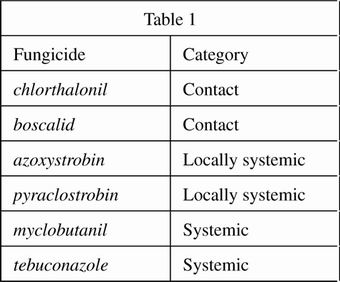

ASR infections generally begin in the lower leaf canopy where humidity is higher and leaves stay wet for longer periods. For this reason, the lower soybean leaf canopy is the primary spray target. Both upper and lower leaf surfaces must be sprayed. Coverage as dense as 400 spray droplets per square inch is considered ideal.
The different properties of fungicide types have important implications for spray application. Contact and locally systemic fungicides require better spray coverage than systemic fungicides. Contact fungicides, because they do not penetrate the plant tissue, are more easily washed off the leaf by rain. This results in a shorter residual control period and more frequent re-application of the fungicide.
Tests have shown that fungicide effectiveness varies based on the soybean growth stage at which the fungicide is applied. Figure 1 identifies some of the different stages of soybean growth. Soybean leaves can be infected at any time with ASR. However, research has shown that the most critical time to protect soybean plants with fungicides is from the R1 through R3 growth stages. Fungicide applications should not be initiated after the R4 growth stage (seed development and mature plant).
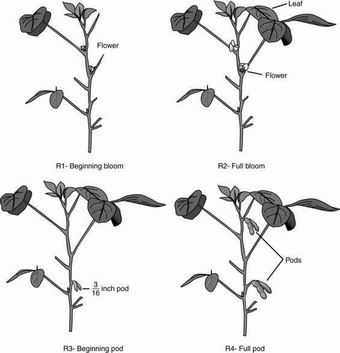
Figure 1
According to the passage, which of the following fungicides should be reapplied frequently?
Based on the information provided, during which stage of growth will the application of chlorthalonil be least effective?
R1
R3
R4
A student claimed that, "Application of a systemic fungicide will only prevent the growth of fungi if applied after Growth Stage 4." Does the passage support this claim?
No; systemic fungicides are active only on the surface of the leaf.
No; fungicides are most effective when applied between Growth Stage 1 and Growth Stage 3.
Yes; systemic fungicides are most effective when applied during Growth Stage 4, but not before.
Yes; soybean plants can only be infected with ASR late in their development.
According to the passage, if fewer than 400 spray droplets per square inch of tebuconazole were applied during Growth Stage 4, the chances that the soybean plants would become infected with ASR would most likely:
not be affected.
decrease only.
decrease, then increase.
increase only.
Equal amounts of azoxystrobin, boscalid, and myclobutanil were applied to three different soybean plants during Growth Stage 3. After 24-hours, each of the plants was sprayed with water. Based on the data, which of the following represents the order, from least effective to most effective, of the fungicides' likelihood of preventing ASR?
According to Figure 1, during which of the following stages in the growth of a soybean plant should fungicide NOT be applied?
Beginning bloom
Full pod
Full bloom
Beginning pod
PASSAGE III
Echinoderms are defined as any of a variety of invertebrate marine animals characterized by a hard, spiny covering or skin. They have attracted much attention due to their extensive fossil record, ecological importance, and bizarre body forms. Most echinoderms are extinct, but many living representatives still exist. All living echinoderms have an internal skeleton and a central cavity, but the outward appearance can vary significantly. For example, starfish and brittle stars have arms that extend from a central disk; sea lilies have a central stalk, or stem, and resemble flowers; sea cucumbers are wormlike and tend to burrow.
The ways in which echinoderms move and feed are as diverse as their body forms. Table 1 lists certain echinoderms and their methods of locomotion (movement) and feeding.
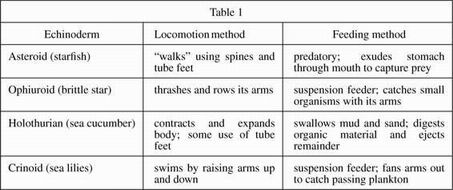
Table 2 includes examples of echinoderm habitats around the world.
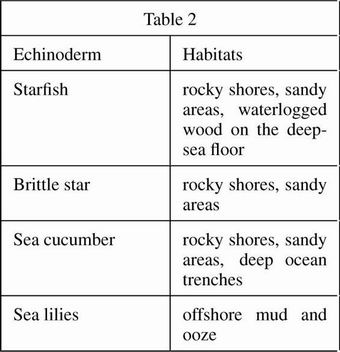
The echinoderm shown below is most likely a:
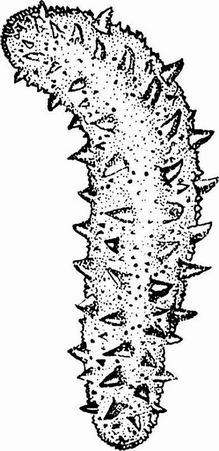
sea lily.
starfish.
sea cucumber.
brittle star.
According to Table 1 and Table 2, crinoids can be found feeding on plankton:
near the shore.
in deep ocean trenches.
in offshore mud and ooze.
on the deep-sea floor.
Based on the data provided in the passage, sea cucumbers most likely burrow in order to:
locate food.
avoid worms.
move offshore.
shed their spines.
Suppose scientists discover a new echinoderm that uses its tube feet to move across the deep-sea floor as it hunts for prey. This newly discovered echinoderm can most likely be classified as a(n):
A student hypothesized that large populations of sea cucumbers could greatly alter the physical and chemical composition of the sea floor. Is this hypothesis supported by the data in the passage?
Yes; sea cucumbers often prey upon commercially important organisms, such as oysters.
Yes; sea cucumbers feed by swallowing sediment, extracting organic matter, and ejecting the remainder.
No; sea cucumbers cannot burrow into the sediment, so will not affect the composition of the sea floor.
No; sea cucumbers do not have a viable method of locomotion.
